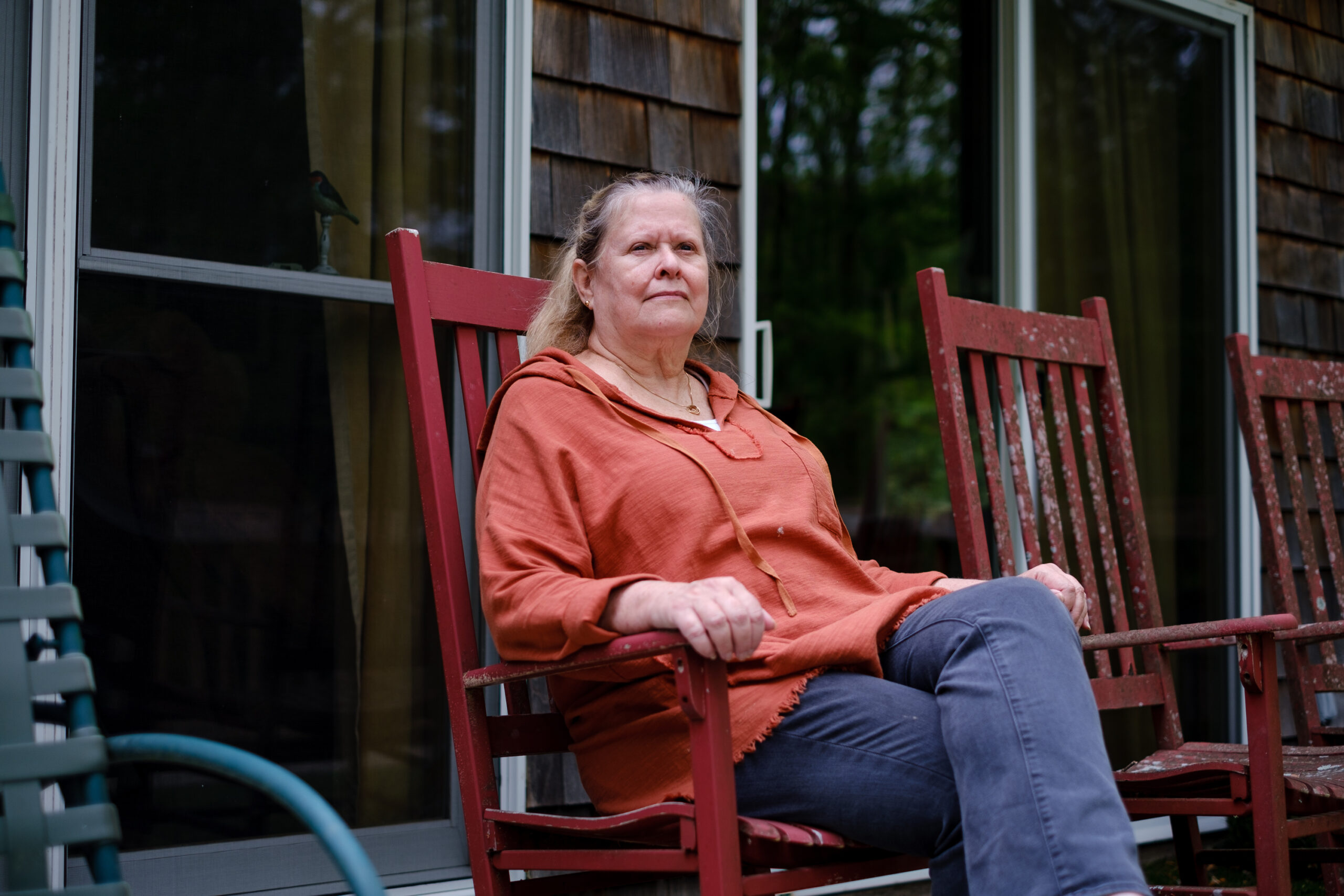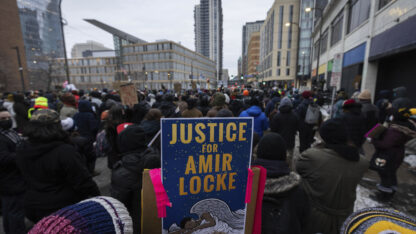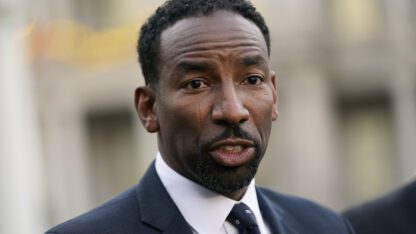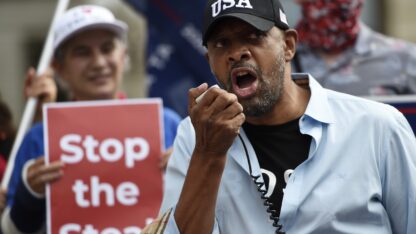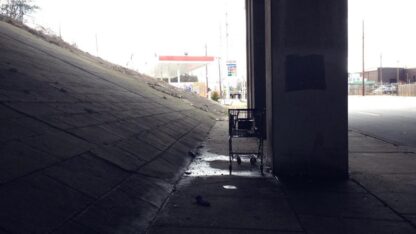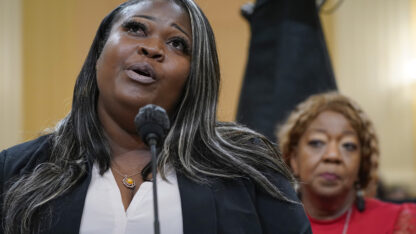“It’s the closest thing I’ll get to heaven on Earth,” Miriam said. “It really is. It’s wonderful.”
But in the fall of 2016, wildfire came to their piece of heaven, while the Harrisons, who are both retired, were still building their house.
It was a terrible fire season across the Southeast, including a wildfire that killed more than a dozen people in Gatlinburg, Tennessee. Fires in North Georgia blanketed mountain towns in smoke.
That fall is a reminder that while the West braces for another ugly summer, it’s not the only region threatened by wildfire.
“The growth of houses in the wildland-urban interface has been one of the really dominant trends in the last few decades.”
Nearly all of the United States evolved with fire. The deadliest wildfire in U.S. history was in Northeast Wisconsin. Even in typically wet New Hampshire, forest managers are seeing the rising threat and stepping up prevention measures.
The Earth’s warming climate is amplifying the risk of wildfires. Meanwhile, more and more people are moving to areas that can burn, often without realizing the danger.
‘Just Want to Get This House Finished’
The day that fire came to their community, Phil and Miriam were driving on the long dirt road out of Tate City to do errands in town. They saw one fire on the side of the road, and then another two, and then a fourth and a woman trying to put it out. The Harrisons told her they’d keep driving out of the woods so they could get to cell service and call for help. By the time they returned, the fires were bigger.
“Growing every minute by the time we came back home,” Miriam said.
They didn’t have to evacuate, but over a few days, the fire spread towards their home and around Tate City.
Wildland firefighters from across the country became fixtures in the community as they worked to manage the fire. To express their thanks, the Harrisons and others left cookies and Cokes on their trucks for them to find when they came down out of the hills.
“I remember thinking, ‘I just want to get this house finished, and live in it and enjoy it, and certainly not have it burn down,’” Miriam said.
The Harrisons had no idea that wildfire was something they needed to worry about, especially in the lush and humid Blue Ridge Mountains. But it turns out, like tens of millions of other Americans, they live in what’s called the wildland-urban interface.
It’s an area where human development and wild places meet and mix, and where wildfire is a big—and growing—problem.
‘Messy Middle Ground’
The wildland-urban interface, or WUI (pronounced “WOO-ee”), now accounts for ten percent of the land in the country, said Volker Radeloff, a professor at the University of Wisconsin, Madison.
“In the U.S., the growth of houses in the wildland-urban interface has been one of the really dominant trends in the last few decades,” he said. “It’s not urban, it’s not forest, it’s not agriculture. It’s this messy middle ground.”
One in every three houses in the country is in the WUI. The Southeast has the highest rate of new home construction in the WUI.
“When our resources are exhausted, 911 can’t take care of it, because there’s nobody to send.”
Radeloff said he doesn’t want to point fingers; these are often beautiful places to live, “but it does create issues when fires come along.”
More wildfires start in the Southeast every year than in any other region of the country, but they’re typically relatively small and get put out quickly.
Climate change—with higher temperatures and more severe droughts—is expected to lead to even more frequent fires, and also to reduce the efficacy of controlled burns set to reduce wildfire risk, according to the latest National Climate Assessment.
“Given the increasing trends we’re seeing with wildfires now, we can no longer operate under this instituted outlook that forest management alone is going to get us out of this,” said Kimiko Barrett, lead wildfire researcher at the Montana-based non-profit Headwaters Economics. “We need to deploy all of our resources available.”
She’d like to see more regulations around developments to help protect people, “such as development codes, wildland-urban interface codes, building codes, things along those lines.”
According to the Insurance Institute for Business and Home Safety, four states have statewide rules around development in the WUI. Barrett says a growing number of cities are adopting them, too.
But there’s not much appetite for more regulation in many rural counties. So, non-profits and volunteers work to persuade people to protect themselves.
A Solution Intended to Spread ‘Like Fire’
On a Saturday morning at a farmers market in Blairsville, Georgia, earlier this year, a table for the Firewise program was set up between a towering inflatable Smokey Bear and a pork rind vendor.
Firewise is a national wildfire awareness program that teaches people how to better prepare and protect their communities. In Georgia, Frank Riley, Executive Director of the non-profit Chestatee-Chattahoochee RC&D Council, coordinates the Firewise program. He’s also a volunteer firefighter in Towns County.
People wandered by the Firewise table at the farmers market and collected pamphlets, listened to warnings about storing their firewood under their decks and checked out special hoses and sprinklers that can help protect homes as fire approaches.
Riley said he’s seen an influx of people moving to North Georgia—and it increased during the pandemic.
“It’s really turned into a rush up here,” he said. “People move up here every day from Atlanta, from Florida. If we don’t tell them, they don’t know until it’s too late.”
He said he’s encountered homeowners’ associations that require people to grow shrubs right up to their houses’ foundations, which is bad for fire safety. There are developments where he knows a fire engine can’t maneuver. And he said he worries about mountain communities on steep hillsides with only a single road in and out, where a wildfire could create gridlock.
“They have a problem,” he said.
Mark Wiles, a fire prevention specialist at the Georgia Forestry Commission was with Riley that day, helping at the Firewise booth.
“There are so many folks that I have talked to over the years that say, ‘You know, if we have a fire, I’ll just call 911, they’ll take care of it,’” he said. “What they don’t realize is when our resources are exhausted, 911 can’t take care of it, because there’s nobody to send.”
Wiles said a local fire department can handle structure fires, but not necessarily a big wildfire in an area with a lot of homes.
“We’ll never have enough fire trucks for everybody,” he said. “I mean, it just won’t happen. In many of the communities here in the state, it’s all volunteer.”
So they keep reaching out homeowner by homeowner, community by community, talking with developers, writing columns and reaching out at farmers markets and fairs.
“And what happens is, this guy starts doing something in his home. Next year, the other one says, ‘Hey, can I do that too,’ and it starts spreading like fire,” Riley said.
Earlier this year, Riley received a “Smokey Bear Award” from the U.S. Forest Service in recognition of his efforts to prevent wildfire in Georgia and neighboring states.
‘Don’t Like Being Ignorant’
The Firewise message is one that Judy Potter has really taken to heart. She lives part-time in Tate City in a house she designed and built. It’s four-stories set in the trees, just feet away from the boundary of the Chattahoochee National Forest, surrounded by birdsong and sunlight.
“I love it, it’s a lovely spot,” she said. “But it’s not a good spot,”
She’s learned, in terms of fire danger, it’s in a terrible place—hard to get to, on top of a ridge, and it’s built out of cedar shake, which burns easily. Potter’s home in the woods is essentially a flammable chimney.
Potter said that maybe if someone had given her a pamphlet when she got her building permit, or if her builders had said something, she would have made different choices.
“We remember. I want people to remember.”
As it was, she didn’t know about the risk of fire until the 2016 fire threatened her house. She was in Atlanta when the fire started, she said, scouring the internet to figure out how to advise her Tate City friends to prepare to evacuate.
“I don’t like being ignorant,” she said. “I can deal with anything as long as I can wrap my head around it and I know what to expect and what to do, where to go for help, who do you run to. And I did not know that before the fire up here. The Firewise program gave me that ability.”
She’s now treated her cedar shake siding to make it fire-resistant. She uses rocks instead of mulch around her foundation. She has an evacuation plan. And she built a garage out of concrete and metal, which she calls her bunker.
Potter’s made changes in the town, too, like adding signs, so that firefighters know how many homes are up each twisting mountain road. And in the Tate City community center she hung up photos of the fire menacing the town.
“It’s a reminder to the people here, or the people who come here afterwards, fire came close,” she said. “We remember. I want people to remember.”
Preparedness can’t guarantee safety or prevent every fire. And Firewise is optional; not everyone in Tate City is interested in participating. Barrett called it a good first step; she said she knows Firewise communities have burned to the ground. But Potter said at least now, she feels like she is helping protect herself and her home the next time firefighters come to defend the town.
Her neighbors Miriam and Phil Harrison say they’re more prepared now, too.
“If it comes, we know what to do,” Phil Harrison said.
There was another fire in Tate City earlier this year, but this time, a helicopter was able to get there quickly and put it out. The Harrisons say they’ve never considered—even for a second—moving away.
